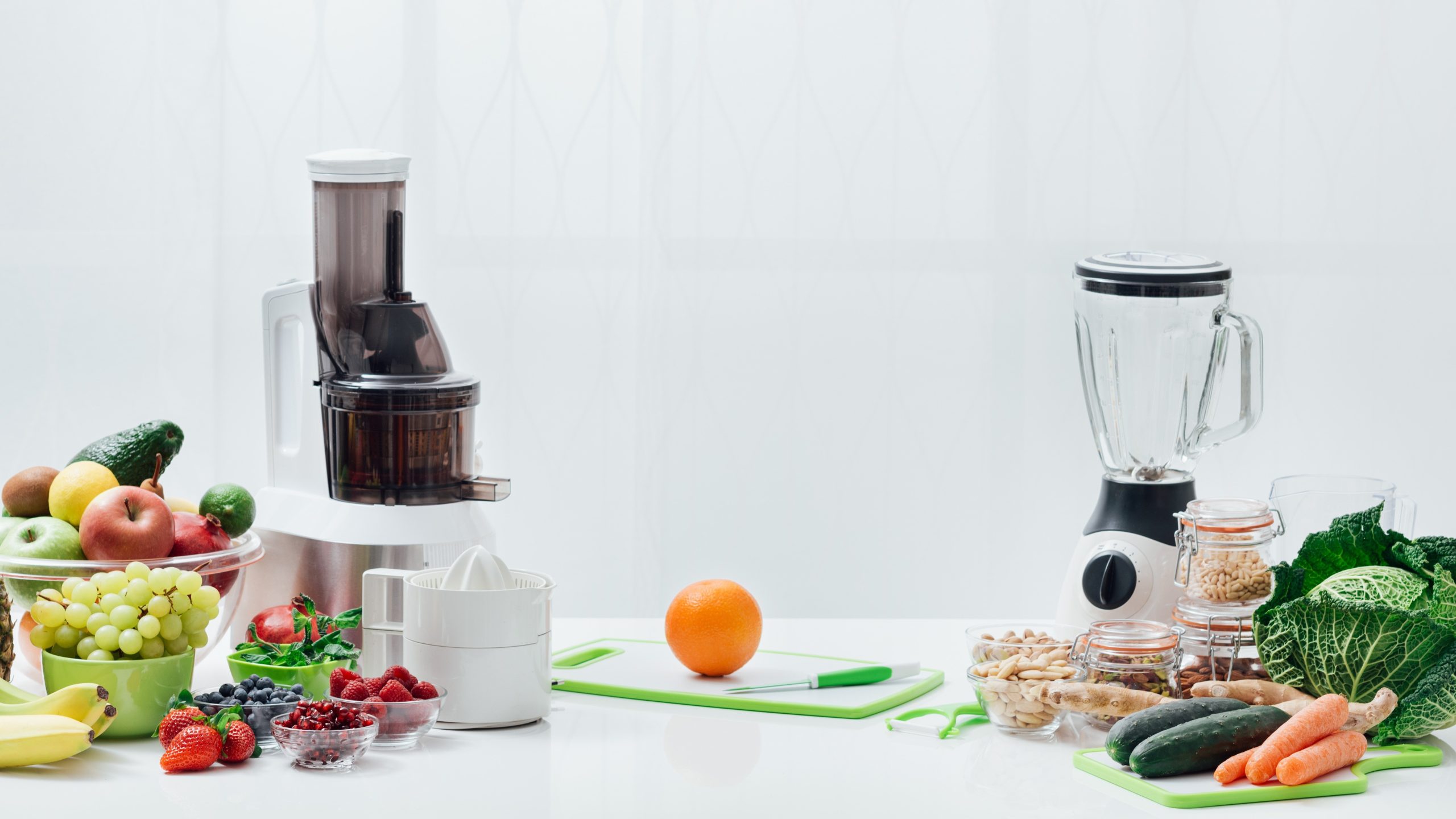Now Reading: Juicer vs. Blender: How to Make the Right Choice
-
01
Juicer vs. Blender: How to Make the Right Choice
Juicer vs. Blender: How to Make the Right Choice

Fast Summary
- Juicers adn blenders serve different kitchen purposes.
- Juicers, specifically masticating and centrifugal types:
– Extract juice from fruits/vegetables by separating fiber.
– Masticating juicers slowly press produce, retaining nutrients and minimizing heat generation.They are quiet but expensive (over $100).- Centrifugal juicers cut at high speeds, producing heat that may reduce nutrient potency slightly. More affordable (starting at $49) but louder with juice prone to separation.
- Blenders:
– Combine all ingredients into a homogeneous consistency for foods like smoothies, peanut butter, or soups.
– Blending retains all fiber without separation. Less powerful blenders are cheaper (under $65), while more capable models range up to $750.
- Recommendations vary based on needs-juicers for regular juice consumption; blenders for versatile food processing.
Indian Opinion Analysis
This analysis highlights useful considerations in India’s evolving culinary landscape where health-conscious practices are gaining prominence. Juicers align well with consumers focusing on micronutrient-rich diets, such as fresh juices catering to rising urban demand for wellness-focused diets.However, the high cost of masticating juicers may limit accessibility across income segments in India.
Blenders provide broader utility given their versatility-they might appeal both to homemakers creating diverse dishes and food entrepreneurs seeking multifunctional equipment. With price-sensitive markets like India’s primarily inclined towards affordable options, entry-level machine affordability could be crucial while selecting between these appliances.
Consumers should weigh usage frequency against cost and functionality before investing in either appliance-a balanced approach ensures good value within individual objectives.

























